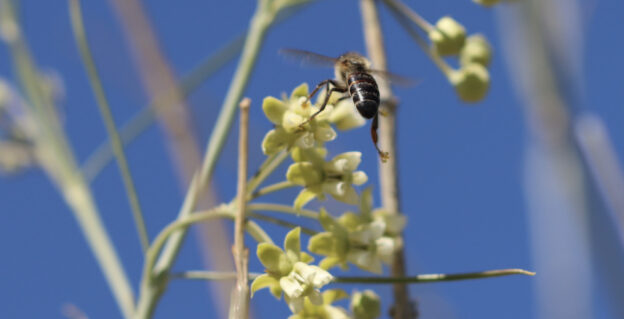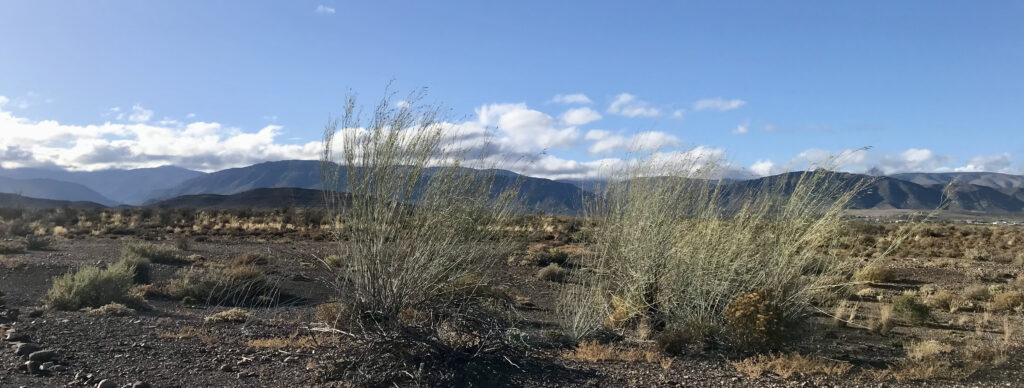
Wild honeybees and propolis
The wild honeybees of Southern Africa are renowned for their propensity in the use of propolis which enhances their survival in the wild. The vast amount of propolis collected and deposited in and around a wild colony attests to its value to the honeybees. But where do the bees collect the waxes, resins and plant exudates that form the basis of propolis, and in such large amounts? Individual honeybees are occasionally seen scraping waxes from buds of Protea species or resin oozing from a wound on the trunks of Vachellia karroo, but most sources of propolis are largely unknown. Although the topography and hence plant species composition may vary greatly between regions, the honeybees appear to have little difficulty in locating a source.
Recorded here is an observation of honeybees collecting the exudate from an oviposition puncture caused by a tephritid fruitfly whose larvae feed on the seeds of a plant widespread in the Karoo.
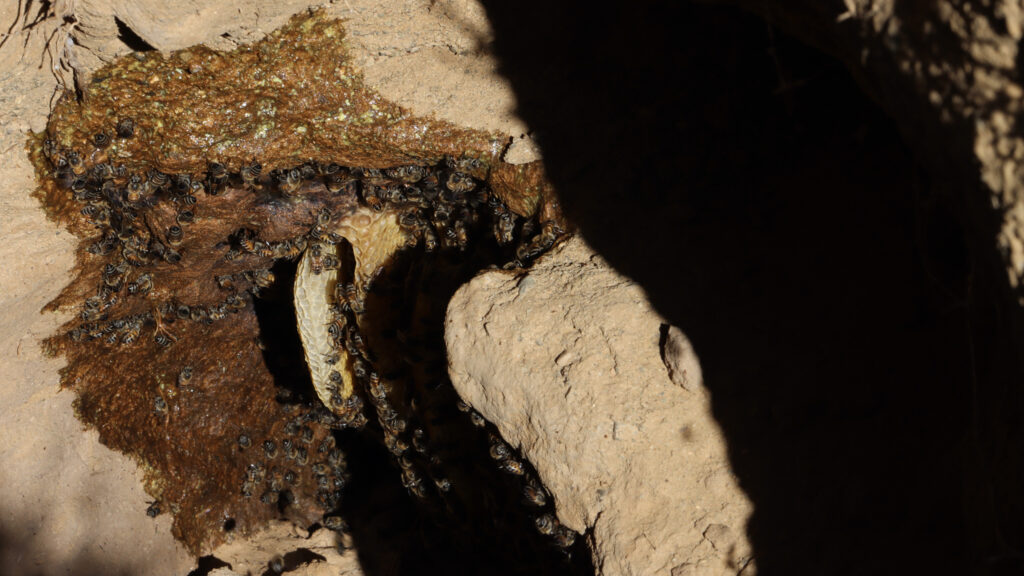
Lammerlat (Gomphocarpus filiformis)
Gomphocarpus filiformis, a plant commonly known as lammerlat (an Afrikaans word, lammer = lambs, lat = stick, often used as a stick to chivy lambs when herding), is widespread across Namibia and the western arid interior of South Africa primarily in Desert, Nama-Karoo and Succulent Karoo habitats. Honeybees were first documented on lammerlat early in December 2023 at KRAAL, a garden in the Prince Albert municipality, where they were collecting resins on horn-like seed pods. The horns indicate that it belongs to the Asclepiadaceae into which family the stapeliads are prominent. There is a fruitfly species which lays its eggs in the stapelia pods where the fly larvae consume the seeds as they develop. A limited survey showed that 98% of the seeds on several Hoodia gordonii plants were entirely consumed (G. Tribe, unpub.). Was this happening on the horn-like seed pods of lammerlat?
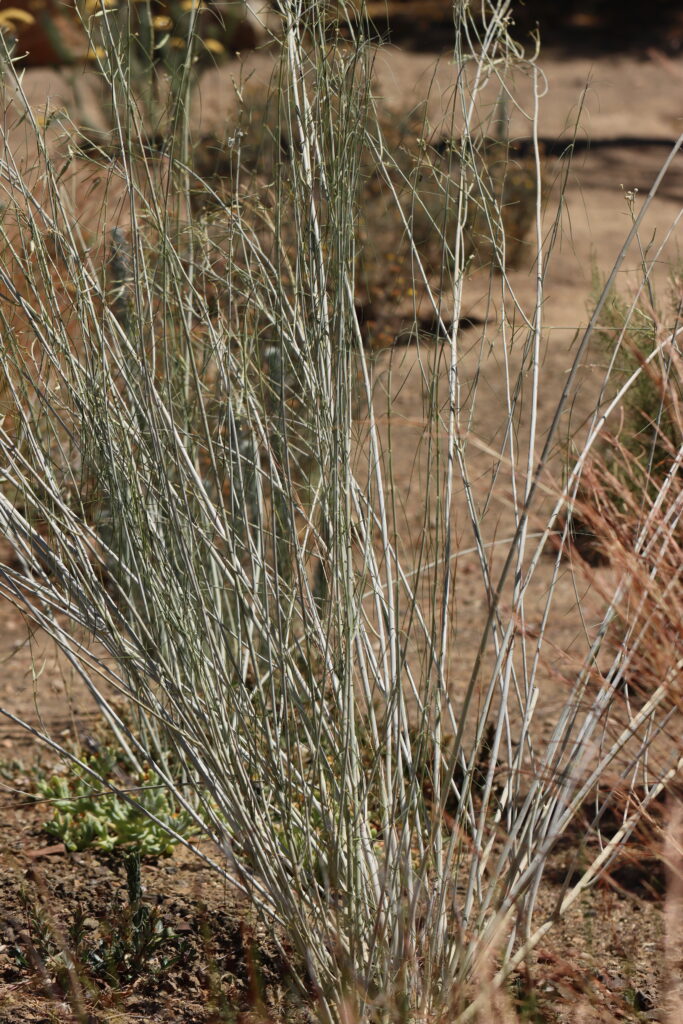
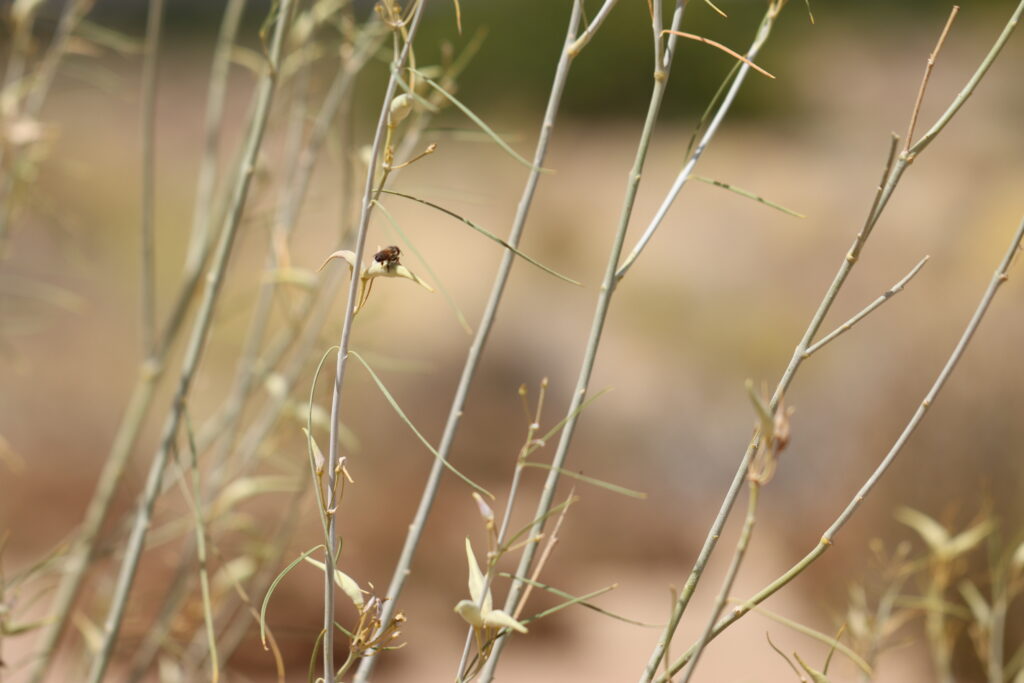
Adaptive significance of plant resins and cardiac glycosides in defense and medicinal contexts
Resins are a defensive mechanism of plants and have a physical function (expelling an organism or encasing it) and a chemical antibiotic function (especially for fungi but also insects). For especially mammalian predators, there are heart poisons called cardiac glycosides (also in Erythrina seeds), hydrogen cyanide, etc. Yet porcupines feed without consequence on a wide variety of poisonous bulbs that are deadly to other animals. Nomadic peoples eat locusts or saturniid caterpillars by first removing the guts for they may contain poisonous plant material. Fireflies make cardiac glycosides and they have evolved warning colouration. Toads also possess such compounds. In very small doses these cardiac glycosides may stimulate the heart and are thus used in the treatment of congestive heart failure and arrhythmia, but at higher doses can cause havoc and death.
When injured, lammerlat oozes a milky sap-like resin, a latex, as a defensive response against pathogens. This sap contains cardiac glycosides that are likewise toxic to herbivorous animals. But some insects, like the monarch butterfly and locusts, incorporate it as a defence mechanism and thus become toxic to their predators (S. Milton-Dean, pers. com., Dec. 2023). Thus a defence strategy evolved by a plant to avoid being eaten can be co-opted by another organism so that it too can avoid being eaten. Most early medicines used by humans involved the same principle in plant-based medication when taken at the correct dosage rate.
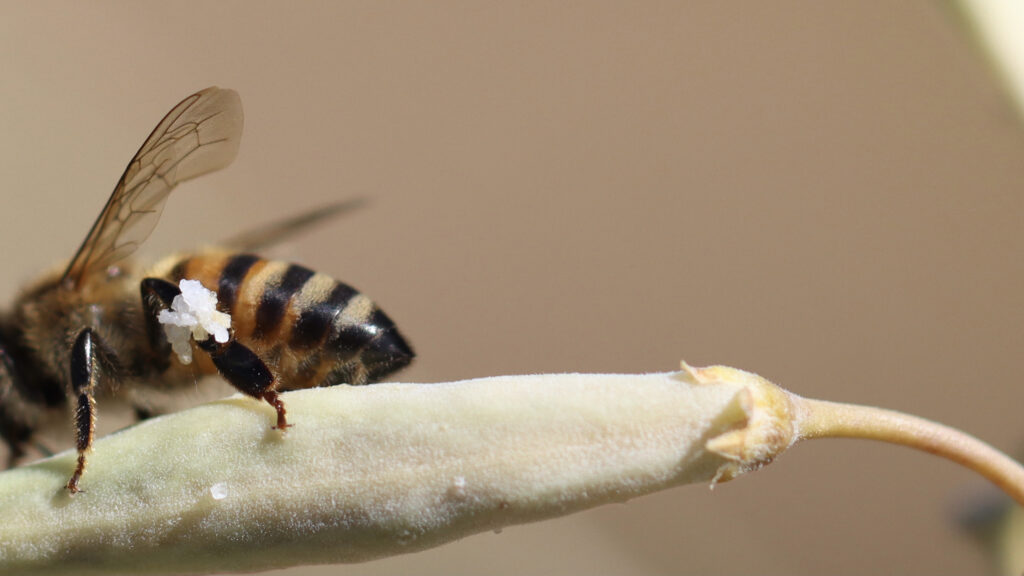
Defensive resin response of Lammerlat seed pods to Tephritid flies
When its seed pods are punctured, lammerlat immediately exudes a resin to seal the pod and protect the seeds within. The puncture is usually a sign that eggs have been laid by the tephritid fly. Seed pods were collected and examined. The larvae pupate in the pod after completing feeding. At Wolwekraal Nature Reserve (113ha) on the outskirts of Prince Albert are several populations of lammerlat where honeybees were immediately observed on the lammerlat collecting resin, but there were also milkweed bugs Spilostethos, muscid flies, and allodapine bees at various locations on the plant. The allodapines collected mostly nectar from the flowers together with a male Coelioxys kleptoparasite bee.
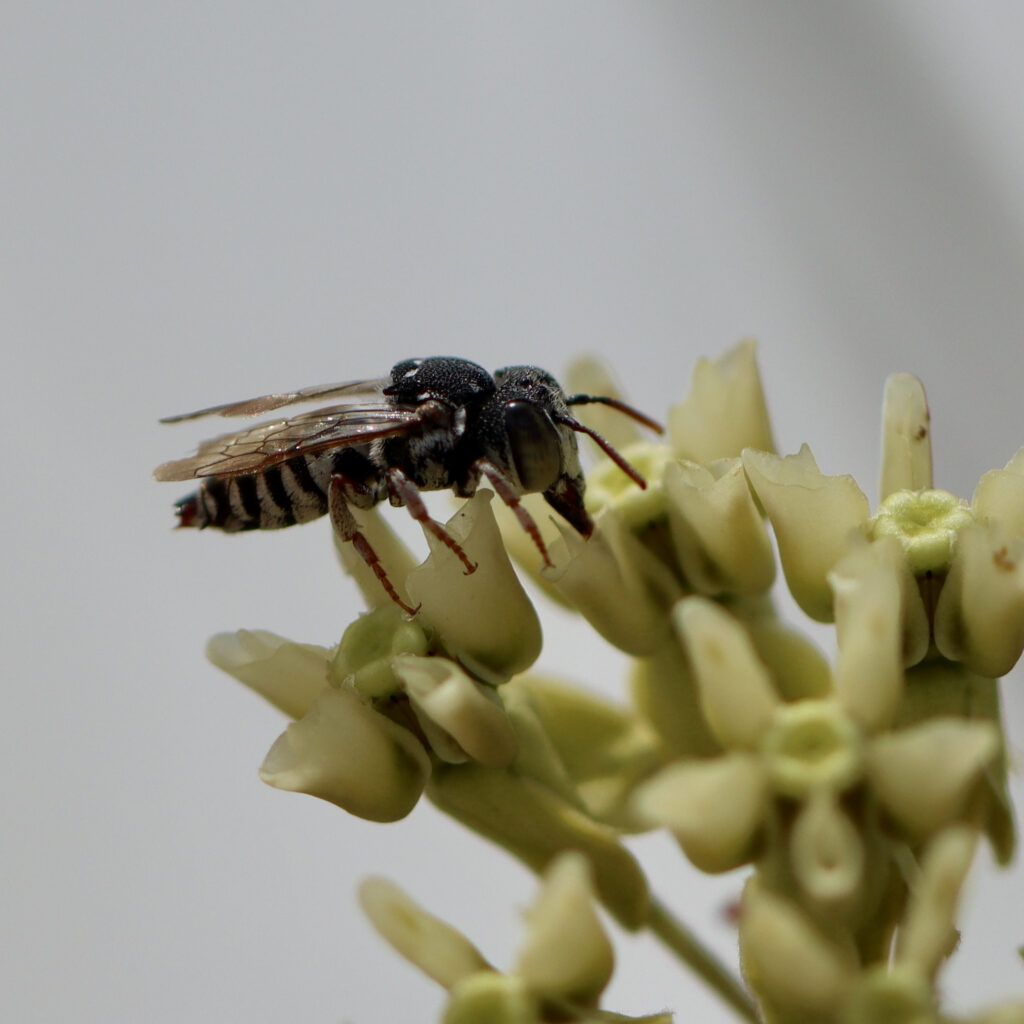

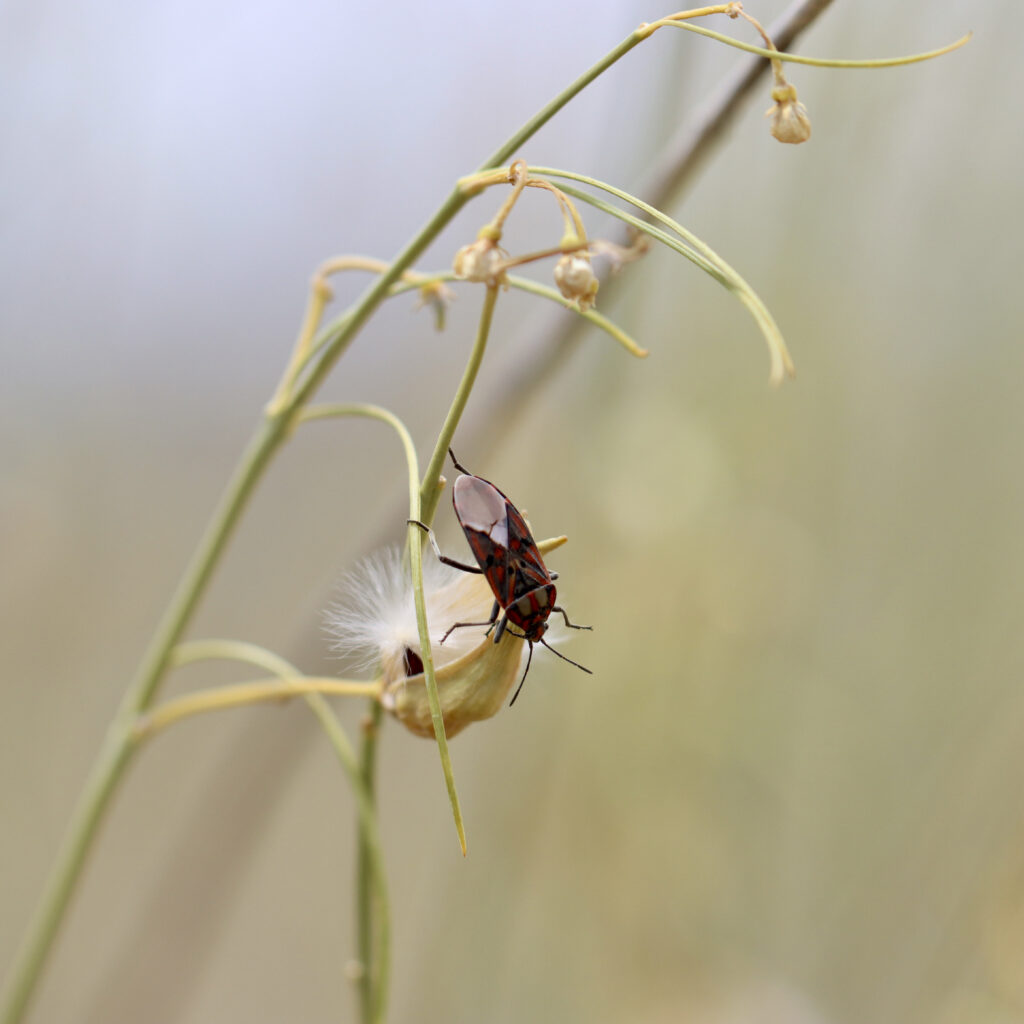
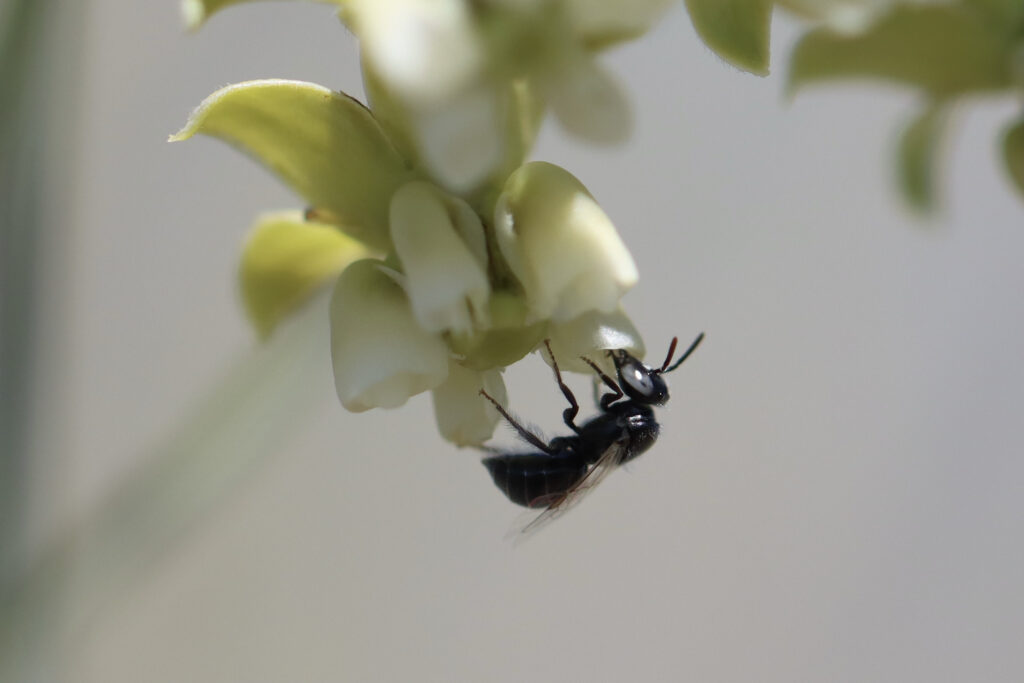
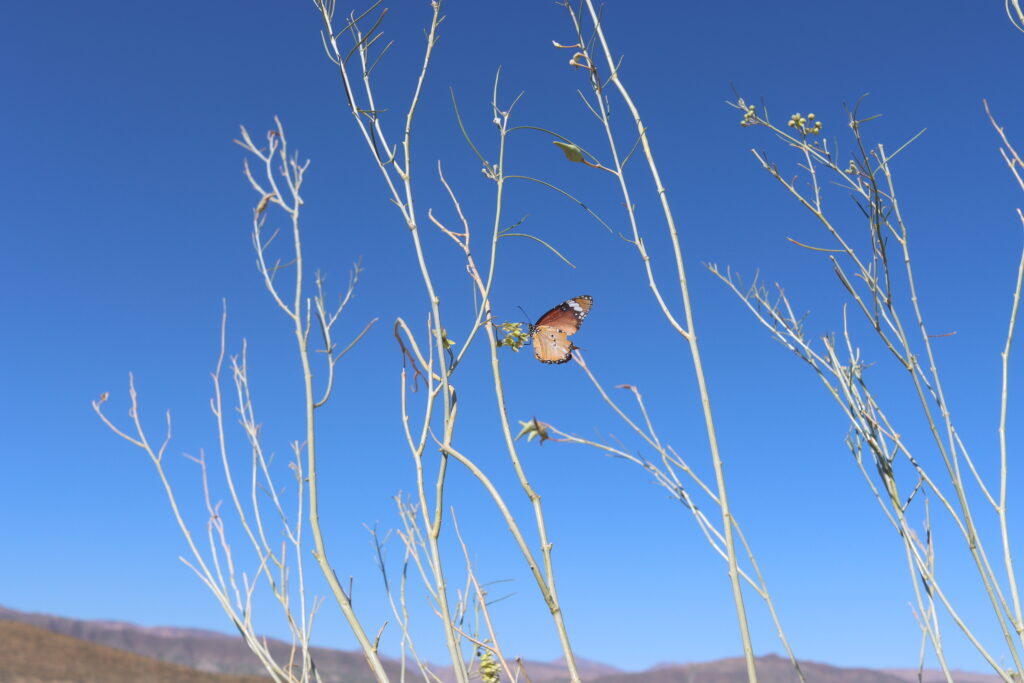
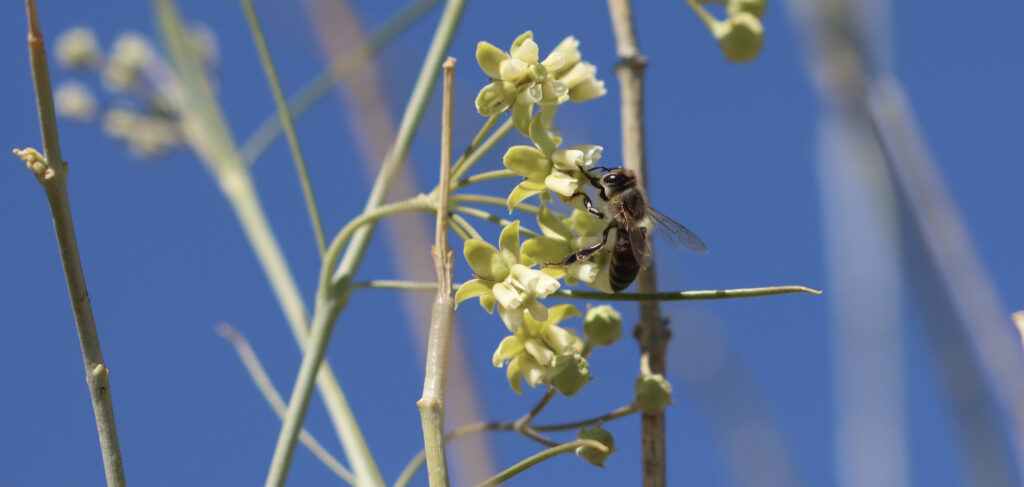
Then a fly which initially looked very wasp-like was spotted on the seed pods. Sue Milton-Dean who offers guided walks on a trail through the nature reserve had studied tephritid flies in Pteronia seeds. One of the conclusions of this study was that flowering and number of seeds containing tephritid fly embryos, were positively correlated with annual rainfall. Sue had a keen eye for these flies. This tephritid fly which was later identified as most probably Dacus bistrigulatus, was laying an egg into the seed pods. We collected a number of seed pods with visible resin and later dissected them under a microscope. Inside each seed pod a larva was found which Sue recognised as a tephritid larva. In seed pods where all of the seeds had been eaten, the biggest mature larvae were found prior to pupation.
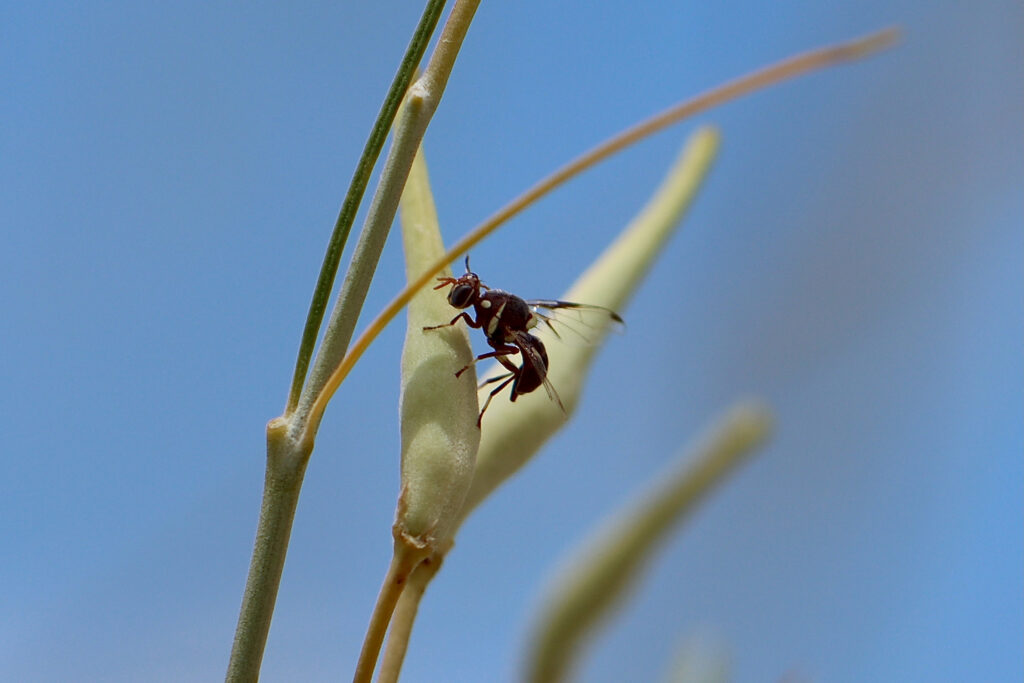
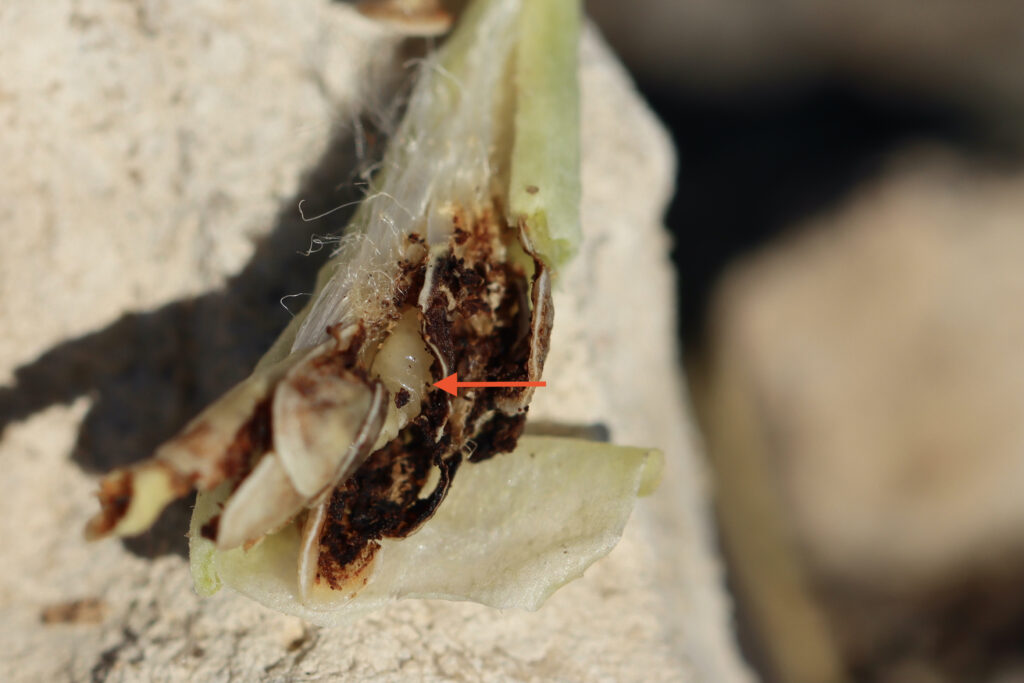
Role of resins in honeybee nest construction
The bees collecting the exudate possibly originated from the two wild honeybee nests located in aardvark burrows on the reserve. At these nests honeybees were seen preparing the surface of the burrow for the application of propolis, enabling the colony to either increase the number and/or length of combs, thereby expanding the size of the colony. Once the surface had been cleaned by worker bees, resins were brought in by the resin-collecting foragers to be used as a sealant. Many of the resins used within a honeybee nest are the main components in propolis. These resins often have beeswax added to it to be more pliable, but can also consist of pure plant exudates in outer structures where it adheres tightly to the substrate, even if the substrate is partly loose.

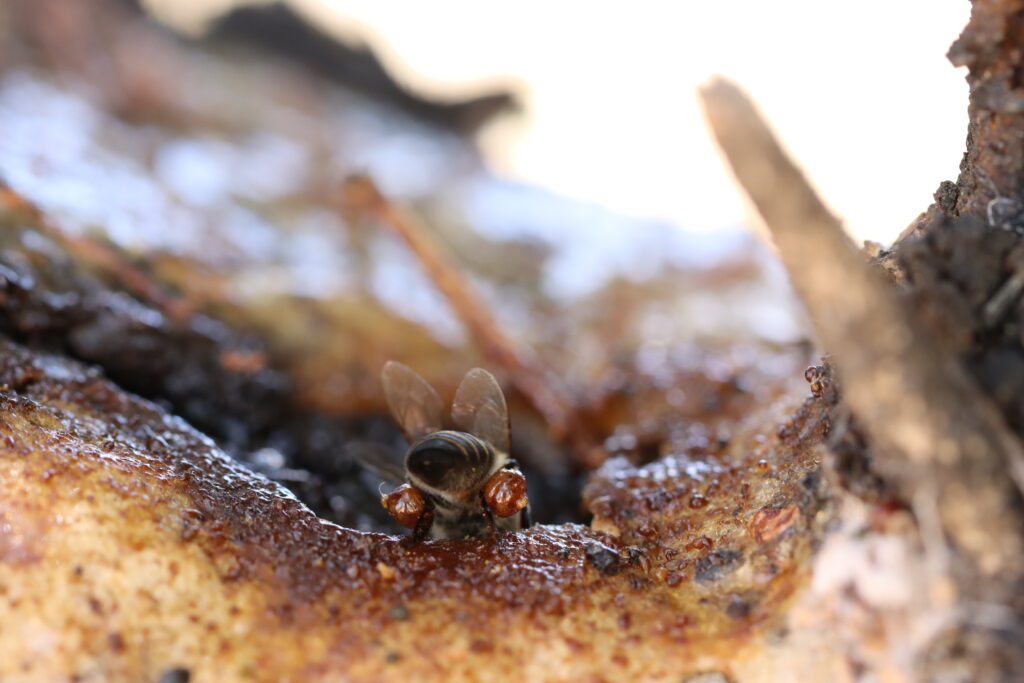
Once the propolis is adhered to the substrate, comb building begins and the colony is able to expand to the outer edges of the adhered propolis. Elsewhere in the nest architecture, propolis may incorporate sand grains or plant material to strengthen it. Its thickness depends on where the propolis is being applied and its purpose. Resins play an important and essential role in honeybee nests, far beyond being a sealant. Being defensive chemical exudates of plants, propolis has many anti-bacterial and anti-fungal properties and is aromatic and health-giving with its essential oils. Lammerlat resin as propolis with its cardiac-glycosidic properties could perhaps be beneficial for honeybees in ways that are not yet known, possibly also as a defence mechanism against predators of honeybees, or ants, wax moth larvae and the like. An interesting aspect to consider would be whether the use of propolis for human consumption containing lammerlat resins could be toxic if taken in high doses.
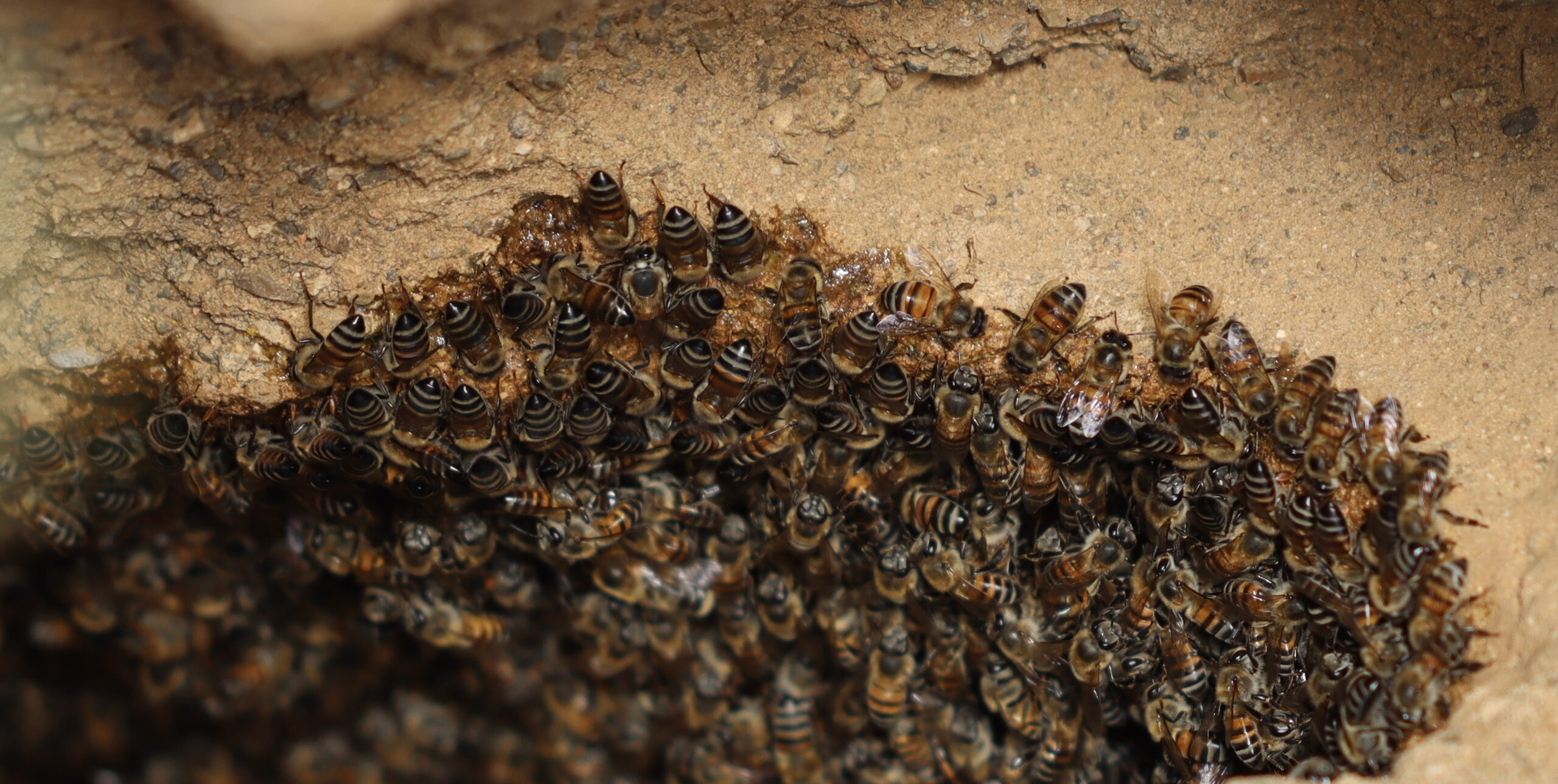
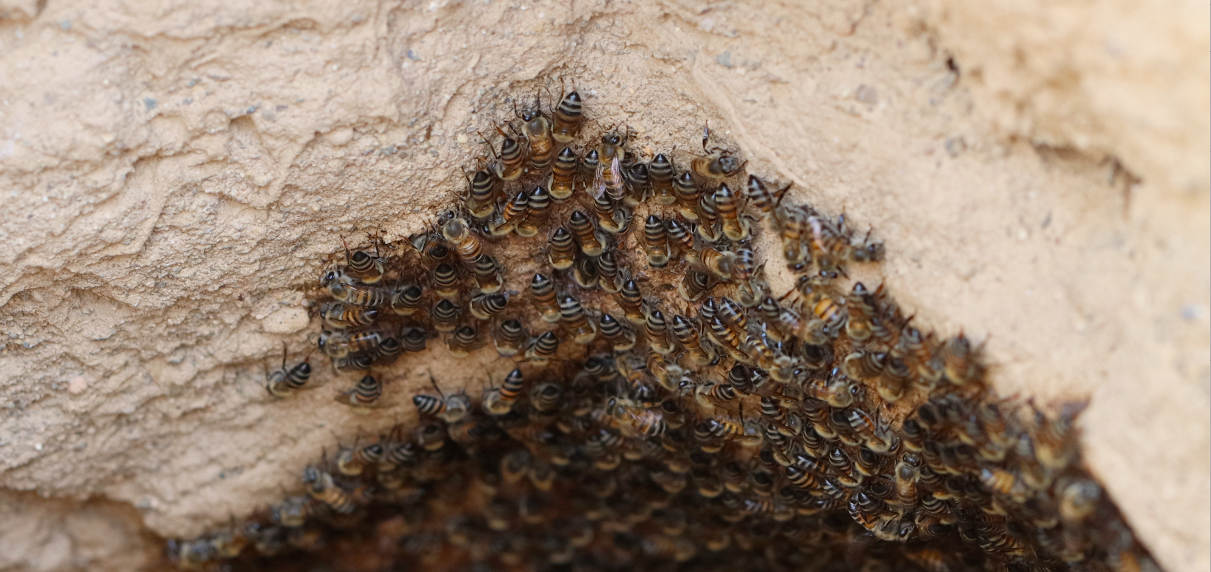
Ecosystem dynamics of Lammerlat
Recently on one of Sue’s nature walks at Wolwekraal, both Rufous-eared warblers and the Karoo eremomelas were seen eating tephritid larvae on the lammerlat. It has also been found that the larvae of these flies are themselves parasitised by a small wasp. The ecological cycle around this arid shrubland species is both complex and remarkable.
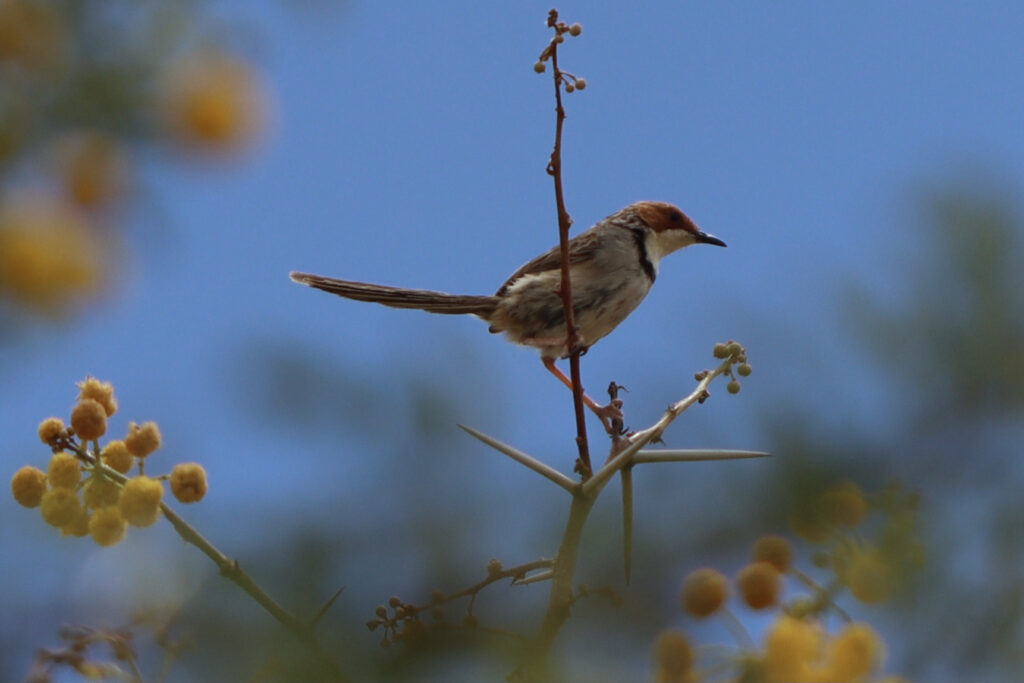
SELECTED REFERENCES:
- Bruyns, P.V. (2002). The Stapeliads of Southern Africa and Madagascar Volume 1 pg 57.Umdaus Press, 329 pgs
- Ellis J.D. Jr and Hepburn, H.R. (2003). A note on mapping propolis deposits in Cape honeybee (Apis mellifera capensis) colonies. African Entomology 11(1): 122-124.
- Ghisalberti, E.L. (1979) Propolis: A review. Bee World 60(2):59-84.
- Iannuzzi, J. (1983). Propolis: The most mysterious hive element. American Bee Journal 123(8): 573-575.
- Iannuzzi, J. (1983). Propolis: The most mysterious hive element Part II – Conclusion. American Bee Journal 123(9): 631-633.
- Milton, S.J. (1995), Effects of rain, sheep and tephritid flies on seed production of two arid Karoo shrubs in South Africa, Journal of Applied Ecology 32, 137-144.
- Tribe G.D., Tautz J, Sternberg K and Cullinan, J. (2017). Firewalls in bee nests – survival value of propolis walls of wild Cape honeybee (Apis mellifera capensis). Sci. Nat. 104:29. DOI 10.1007/s00114-017-1449-5
- Whiteman, N. (2023), Most Delicious Poison, Little, Brown Spark.
